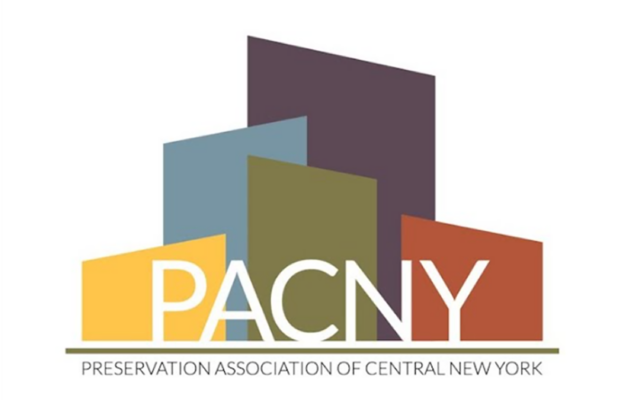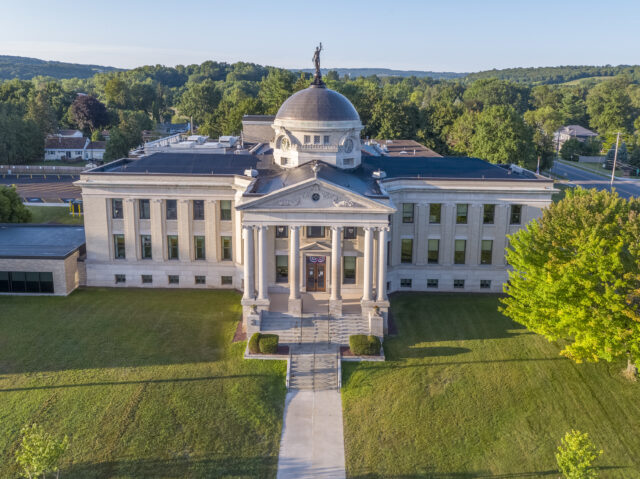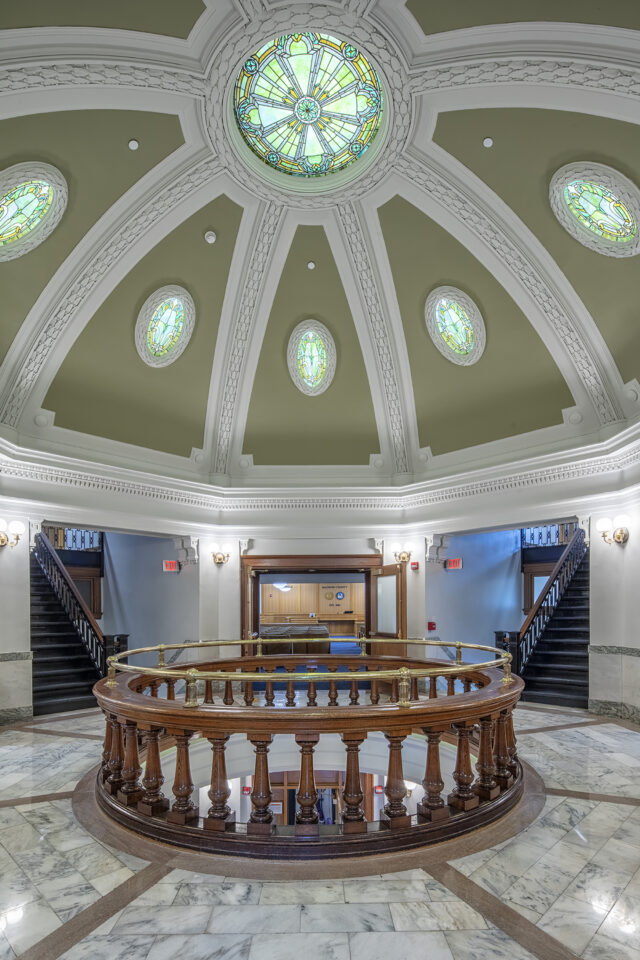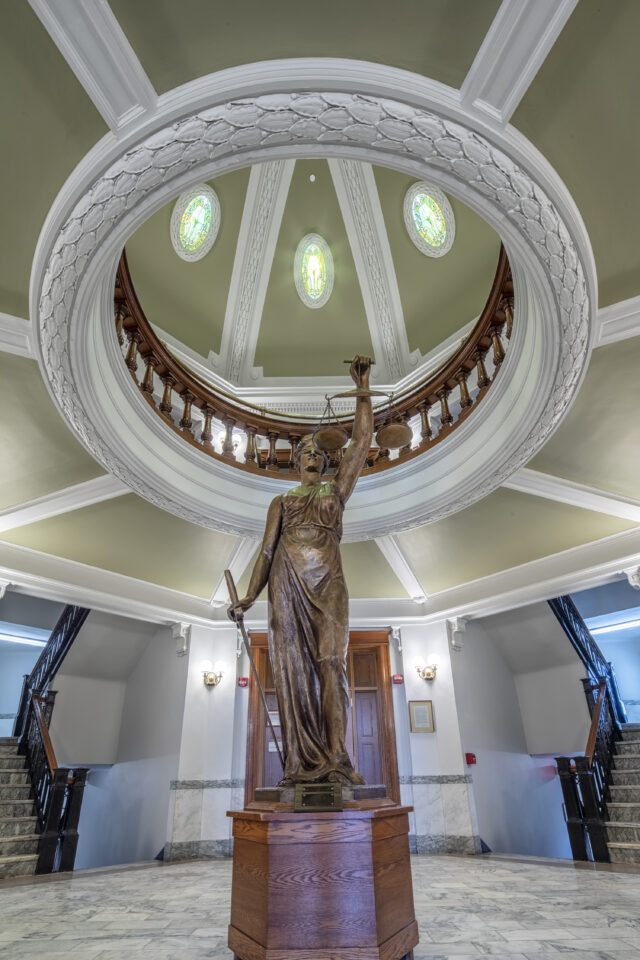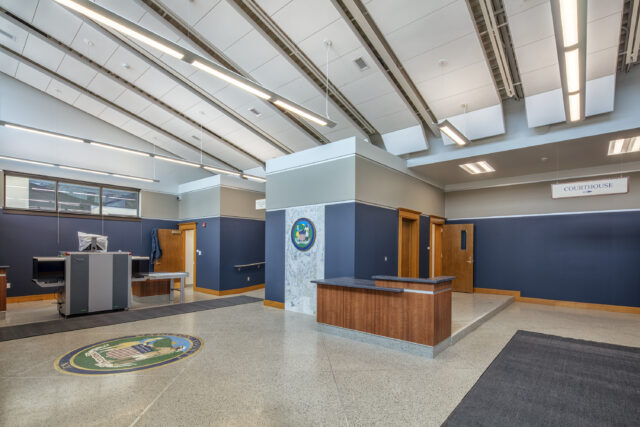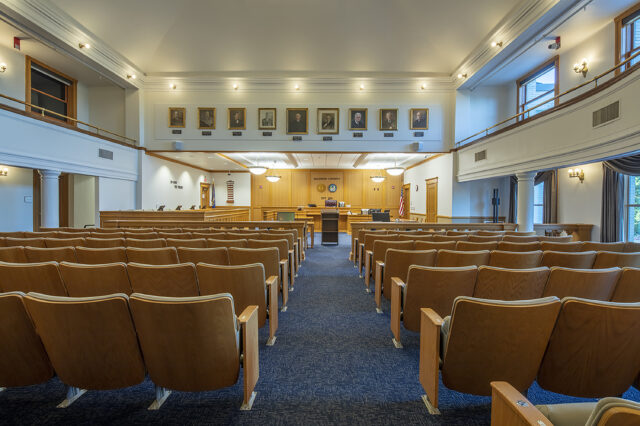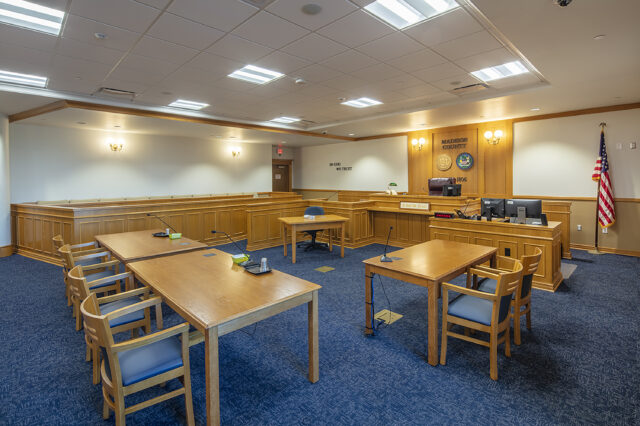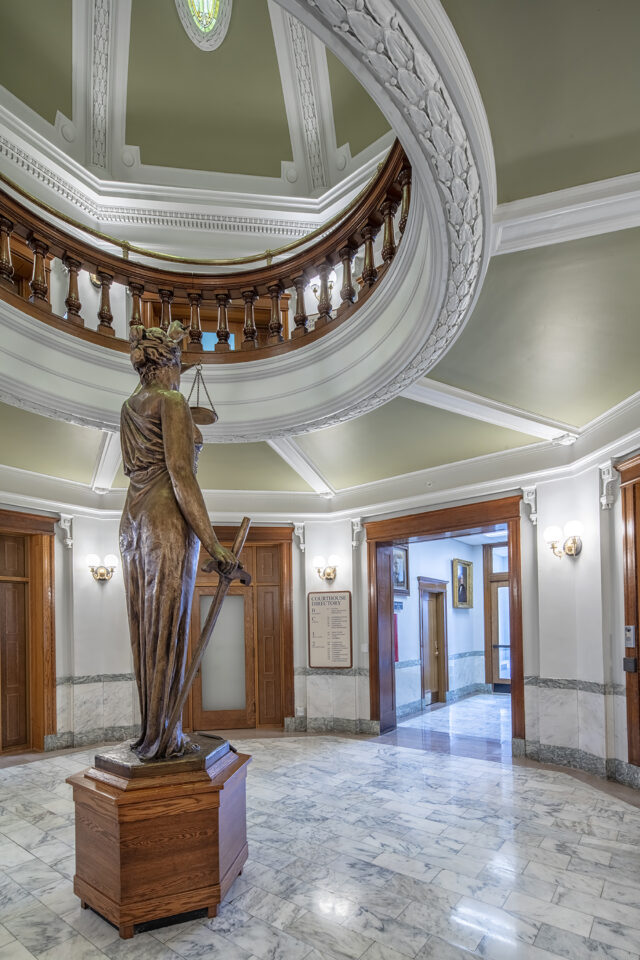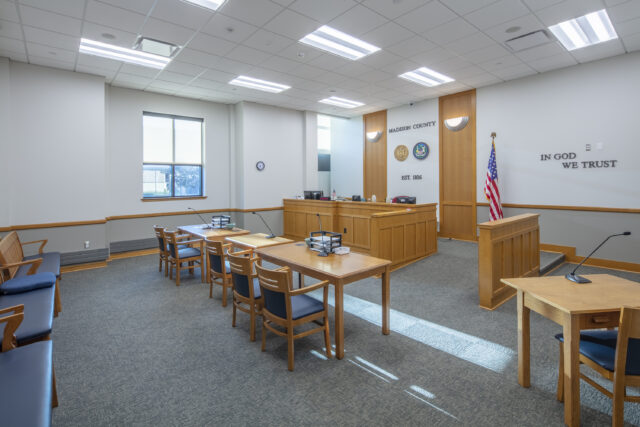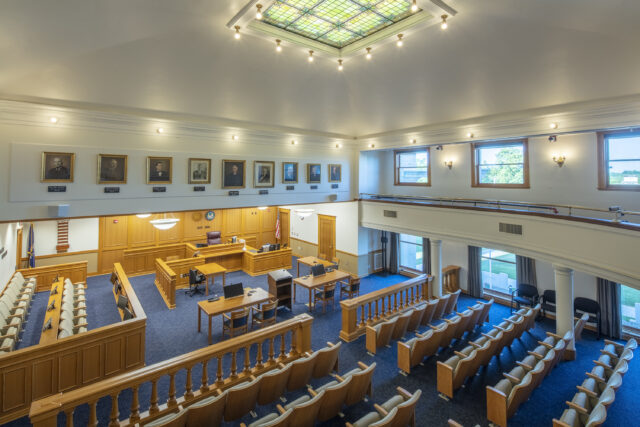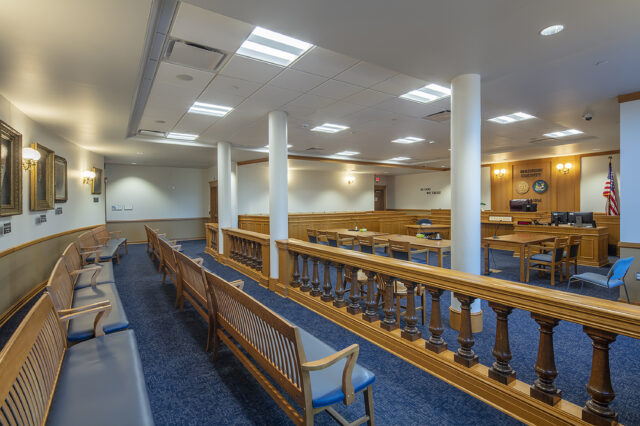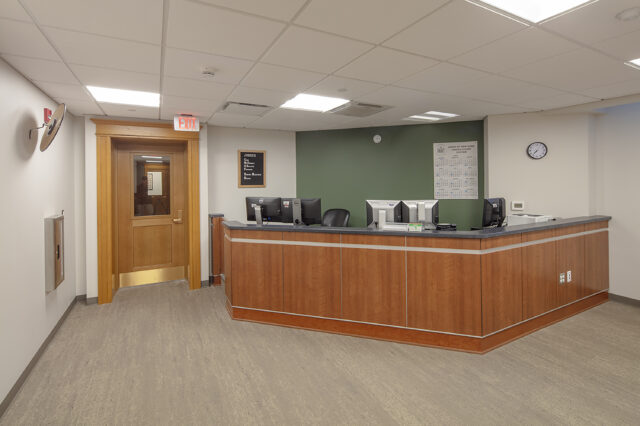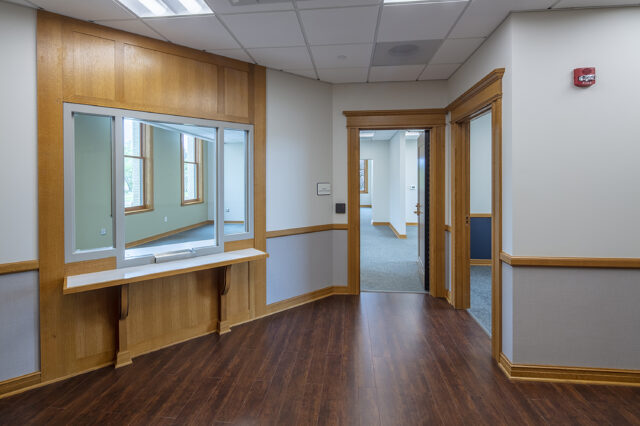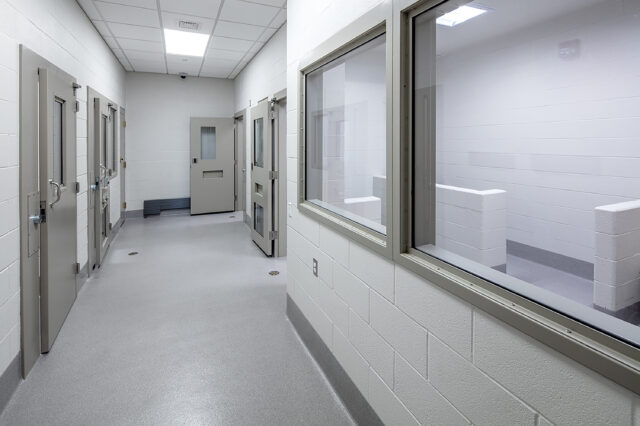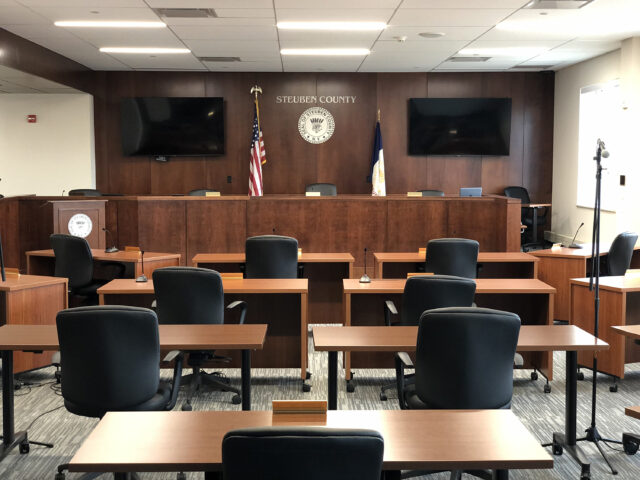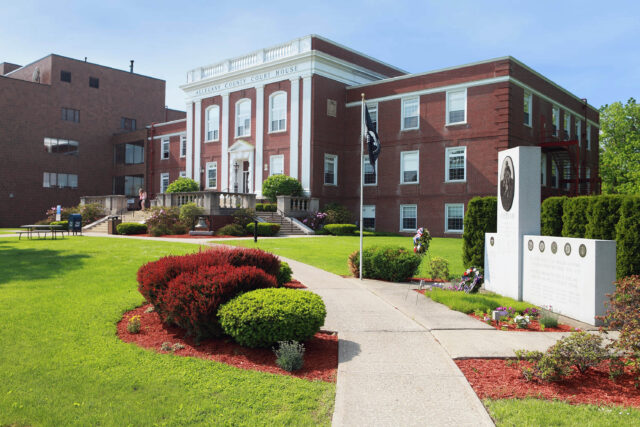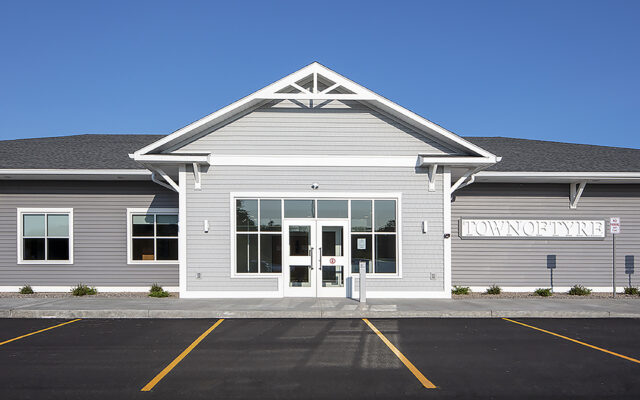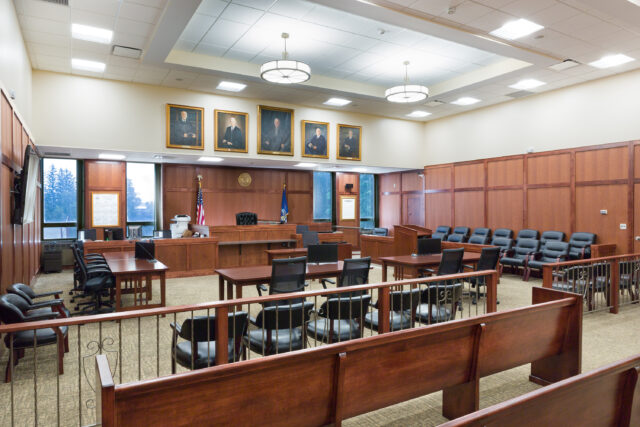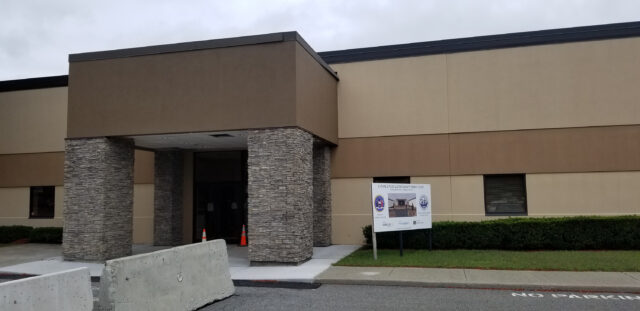The Madison County Courthouse was originally built in 1909 and designed by James Gordon, one of the most notable courthouse architects in the United States. However, the original three-story masonry structure design was inefficient for modern court operations and did not accommodate persons with physical disabilities. The main entrance was non-accessible and all the major courtrooms in the building incorporated sloped stadium seating.
Working with Madison County, LaBella performed three separate cost-benefit studies to determine options to bring the courthouse into compliance with modern day ADA standards and current New York State court operational requirements. The project included the renovation of 20,000 sq. ft. within the existing courthouse and the design and construction of two additions intended to provide an accessible, secure, and efficient work environment that met the program needs of Madison County and the New York State Office of Court Administration (OCA), as well as conformed to the mandates of the New York Commission of Corrections.
Renovation of the existing building included major interior structural modifications to make all the levels flat and to carve in a new ADA accessible elevator that would reach all levels of the building. The interior of the existing courthouse was also reconfigured for efficiency of court operations. A major portion of the work included expanding existing courtrooms on the first and second floors through the demolition of a four-story staircase and the creation of a level floor system framed over the existing sloped and stepped floor systems, extending into this demolished area. The courtrooms feature custom ADA accessible millwork and are equipped with state-of-the-art technology and access control.
LaBella’s approach to the interior renovation was to preserve the original architecture and finishes of the main building as much as possible, especially in the main courtrooms and rotunda atrium. The original marble flooring and intricate plaster detailing in the atrium and feature courtroom were being preserved. The original decorative trim was maintained. And the original stained-glass features in both areas were repaired and restored to bring the vibrant colors back to life. Other unique elements of the existing courthouse renovation included restoring original paint colors discovered through analysis of existing plaster, salvaging existing wood door trim, creating custom light fixtures to match existing sconces, and installing ADA-compliant custom hardware to mimic the original door hardware detailing. Additionally, a sprinkler system was added throughout the building in inconspicuous areas to preserve the historic aesthetic.
The single-story, 2,600 sq. ft. addition serves as the new ADA accessible main entrance for the Courthouse and the County Office Building and creates a secure, single point of entry into the complex. Design components complement the existing Courthouse, while creating contrast through the use of storefront systems, a canopy, an angled roof system, and modern vernacular. Clerestory windows provide an abundance of natural light, creating a welcoming environment for visitors, while maintaining security required by OCA officers. The interior design included exposed structure, custom security millwork, salvaged existing marble, terrazzo flooring, and County branding.
The two-story, 8,000 sq. ft. addition to the existing courthouse provides access to the Veteran’s Building, as well as a second entrance into the courthouse for staff and the incarcerated. The expansion also provides additional space for court operations, including a grand jury room, a hearing room, judges’ chambers, jury deliberation rooms, evidence storage, a secure sally port, holding cells, and additional circulation space with a stair tower and an elevator. The exterior design of the additions complements the existing courthouse through the use of similar color brick veneer, a cast stone watertable that aligns with existing limestone, similar style windows, and ornate cornice detailing. Modern elements such as the butterfly-style storefront entrance and sloped curtain wall systems distinguish the structure as an addition.
With all the work done to the courthouse, the County and the LaBella team were very strategic and sensitive to preserve the exterior aesthetics of the existing building to maintain its majestic prominence in the community. In addition to basic façade restoration work to preserve the masonry, the County also decided to make a permanent upgrade to the dome of the building by cladding it in copper. Additionally, to restore the beauty of the Lady Justice statue on the dome and the eagle statue at the front porch pediment, the project included working with a local artisan to have these two statues completely replaced. Other exterior work involved replacing single-pane glass windows with energy-efficient window systems that replicated the aesthetic of the original Courthouse. Furthermore, the site was regraded, and new sidewalks provided to create accessible routes to the facility.
The Madison County Courthouse project required close collaboration between Madison County, LaBella (architecture/engineering), LeChase Construction (construction manager), Murnane Building Contractors (general contractor), and Ridley Electric (electric contractor). The design and construction team diligently worked together to create a project that met the needs of an accessible, modern courthouse facility, while being cognizant of original historic detailing that tells the story of this rich piece of architecture.
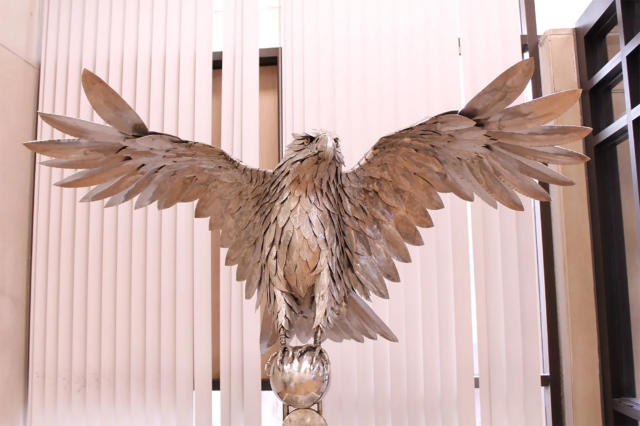
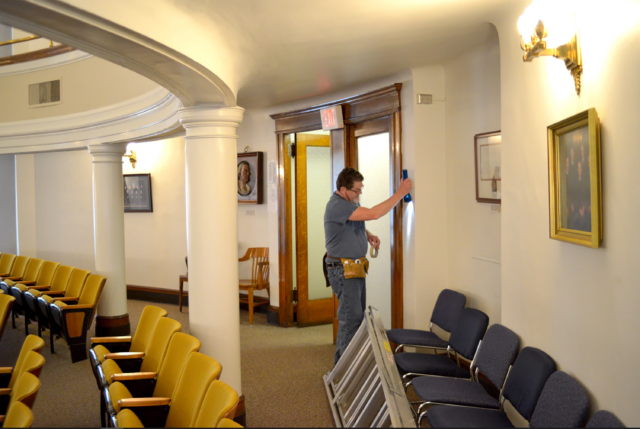
 Madison County held a ribbon cutting ceremony in May 2019 to celebrate it’s renovated courthouse in Wampsville, NY.
Madison County held a ribbon cutting ceremony in May 2019 to celebrate it’s renovated courthouse in Wampsville, NY.